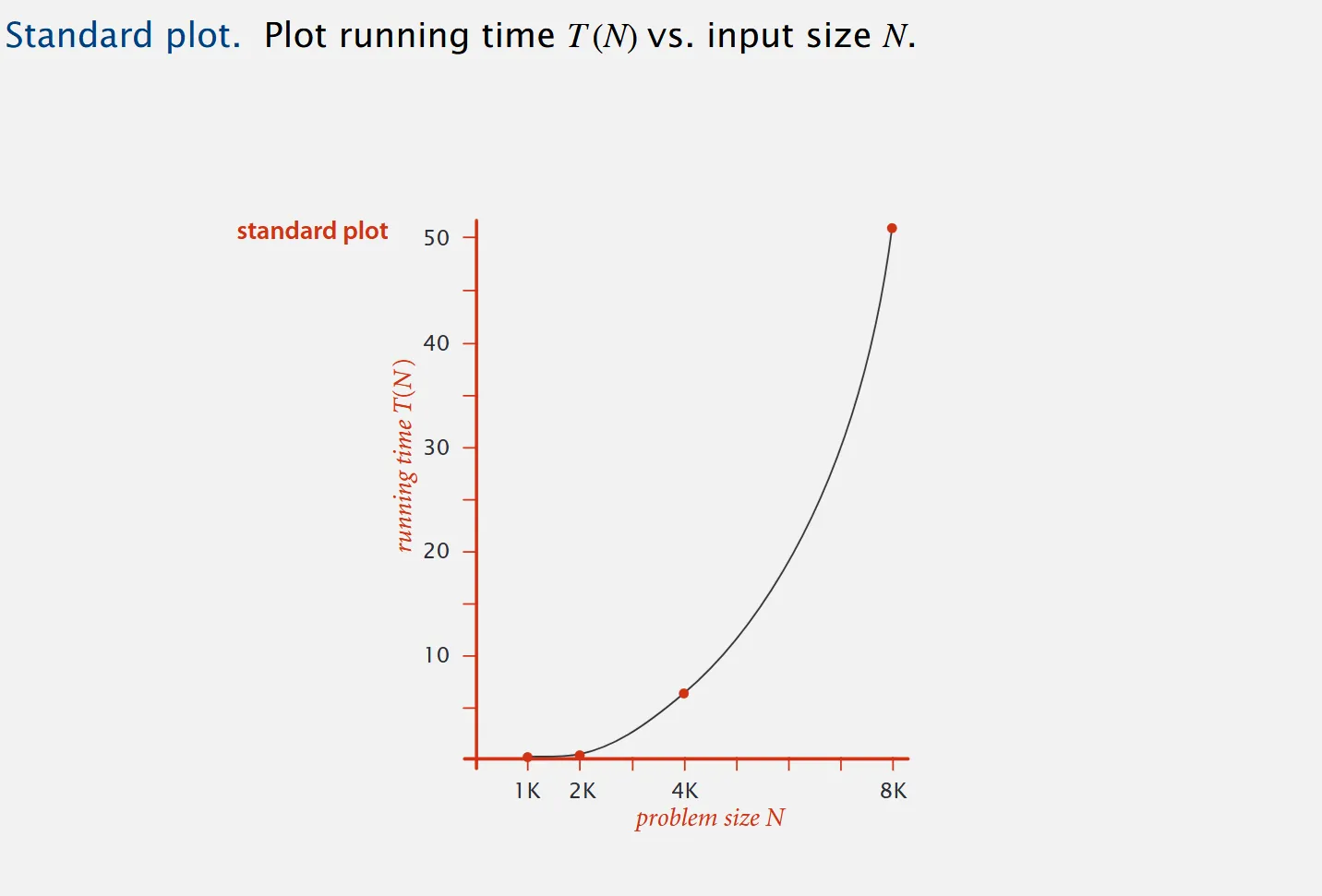Example - Analysis of an Algorithm (3-Sum Problem)
Given N distinct integers, how many triples sum to exactly zero?
30, -40, -20, -10, 40, 0, 10, 5
Answer: 4 (see below)
| a[i] | a[j] | a[k] | sum |
|---|---|---|---|
| 30 | -40 | 10 | 0 |
| 30 | -20 | -10 | 0 |
| -40 | 40 | 0 | 0 |
| -10 | 0 | 10 | 0 |
Write a program that can solve this on scale efficiently.
Method 1 Brute Force (Slow - Quadratic)
Section titled “Method 1 Brute Force (Slow - Quadratic)”//Check each triplein N = a.length;int count = 0;for (int i = 0; i < N; i++ ){ for (int j = i + 1; j < N; j++){ for (int k = j+1; k < N; k++){ if(a[i] + a[j] + a[k] == 0) count ++; } }}return count;Power Law
Section titled “Power Law”We would first take our algorithm and plot empirical data to understand our running time and how it scales. For the above code we might get a curve as such:
| N | time(s) |
|---|---|
| 250 | 0.0 |
| 500 | 0.0 |
| 1000 | 0.1 |
| 2000 | 0.8 |
| 4000 | 6.4 |
| 8000 | 51.1 |
| 16000 | ? |
 | |
| Continuing from our standard plot utilising a log-log scale we can then look at the slope to understand the efficiency of our algorithm at scale: |

From our hypothesis we can now predict the running time of our program
Predictions
Section titled “Predictions”The running time is about 1.006x 10POW(-10) x NPOW(2.999) seconds
- 51.0 seconds for N = 8,000
- 408.1 seconds for N = 16,000
Observations
Section titled “Observations”| N | time(seconds) |
|---|---|
| 8K | 51.1 |
| 8K | 51.0 |
| 8K | 51.1 |
| 16K | 410.8 |
| Hypothesis Validated! |
Doubling Hypothesis
Section titled “Doubling Hypothesis”A quick way to estimate b in a power law relationship is by doubling our hypothesis and capturing the lg ratio.
| N | Time | Ratio | lg ratio |
|---|---|---|---|
| 250 | 0 | ||
| 500 | 0.0 | 4.8 | 2.3 |
| 1000 | 0.1 | 6.9 | 2.8 |
| 2000 | 0.8 | 7.7 | 2.9 |
| 4000 | 6.4 | 8.0 | 3.0 |
| 8000 | 51.1 | 8.0 | 3.0 |
| Here we witness a convergence of our lg ratio to a constant of 3. Exponent of N and running time. |
System Independent Effects
Section titled “System Independent Effects”(Determines Exponent B in Power Law && Determines constant in a power law)
- Algorithm
- Input Data
System Dependent Effects
Section titled “System Dependent Effects”(Determines constant in a power law)
- Hardware
- Software
- System